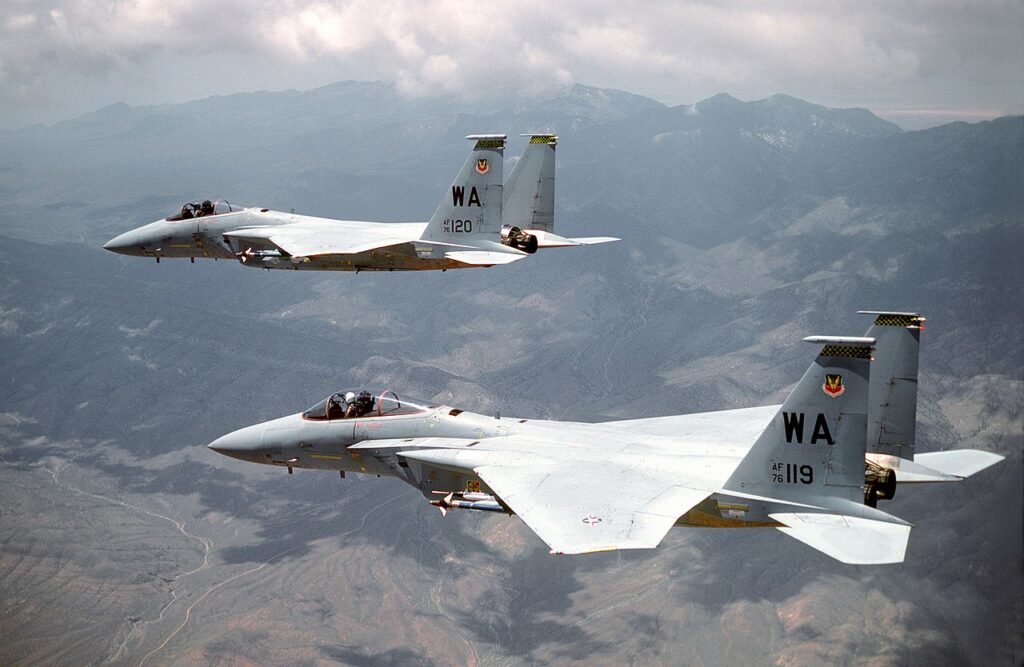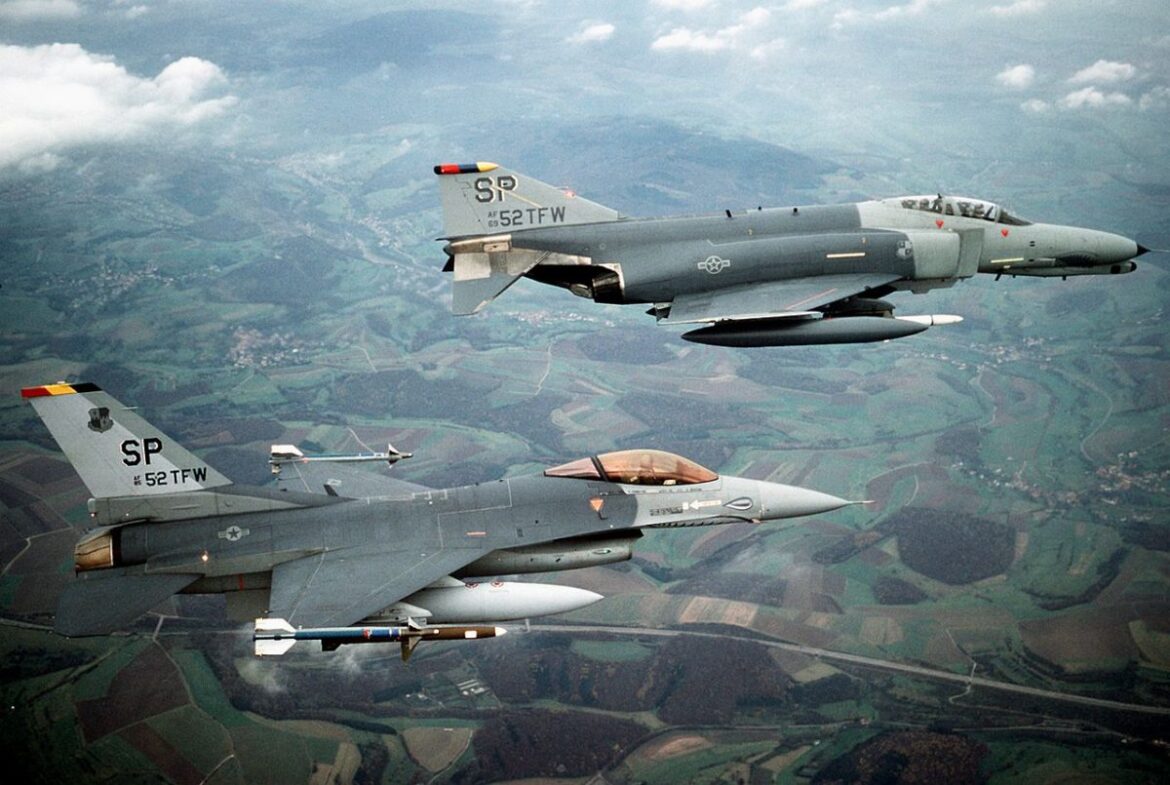‘The small chance we had against an F-15 Eagle was gone against the F-16 Viper. Not even putting down the landing gear and letting him fly by us worked!!!’ Jim Howard, former F-4G and EF-111A EWO
F-4G, the F-4E fighters that were transformed into Wild Weasels, had their cannon replaced with the AN/APR-47 electronic warfare equipment. Their goal was to take down enemy air defenses, such as radars that detect surface-to-air missiles (SAMs). For this specific reason, 116 F-4Es were converted to F-4Gs.
The F-4G operated in combination with other F-4Gs or as a hunter aircraft, directing fighter-bombers, such as the F-16, against SAM sites while carrying AGM-88A/B/C High Speed Anti-Radiation Missiles (HARM). The F-4G was operated by a pilot along with an Electronic Warfare Officer (EWO) to facilitate communication, navigate, and plan assaults on the SAM installations.
How did the F-4G perform in dissimilar aircraft combat training (DACT) against the F-15 Eagle and the F-16 Viper?
‘In ancient times I was the last EWO in the 67th TFS Wild Weasel squadron when it converted from the F-4Cww to the F-15A,’ Jim Howard, former F-4G and EF-111A EWO, explains on Quora.

‘Sadly, the 67th recently shut down without a replacement.
‘All of my pilot friends raved about how much they loved the Eagle, and how easy it was to fly compared to the F-4. An F-15 instructor said he could solo a private pilot in the Eagle after three rides.
‘The Weasel mission moved to the 90TFS in the Philippines, and I wound up flying against the same guys in their Eagles a couple of times. The nice thing about the Eagle was that we, in our F-4Gs, had at least a small chance against them. We could see them a long way away and, and could exchange AIM-7 missiles head-on. Then we had to run away as fast as two J-79 motors could take us. To hang around F-15s in an F-4 was certain death, but we did sometimes succeed in living through the encounter.
‘The F-15 was a big target, we could see them 30 to 40 miles away head on.
‘(You have to remember that the AN/APQ-120 was a manually operated radar. The back seater had adjust tilt, gain, and scan to find a target, and then mentally compute his heading and altitude. This was easy to mess up in the heat of battle. Modern radars think for the operators, but those radars didn’t, not a bit.)
‘Then F-16s showed up in the Pacific. The only nice thing about that was that you died relaxed because YOU COULDN’T SEE THE B******S UNTIL YOUR WARNING GEAR LITE UP. By then they were camped at your six o’clock and an AIM-9 was on the way, worse, a hail of 20mm rounds.’
Howard concludes;
‘The small chance we had against an Eagle was gone against the Viper. Not even putting down the landing gear and letting him fly by us worked!!!
‘(OK, that slow down and let him fly by tactics only worked in the movies. But nothing else would either if the Viper saw your first.)’
Photo by U.S. Air Force

